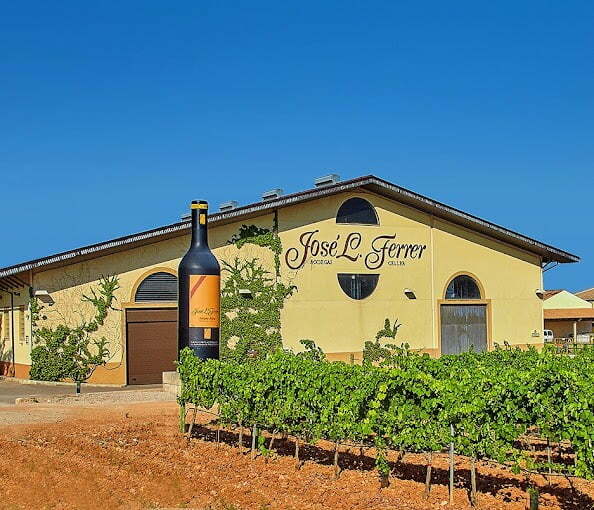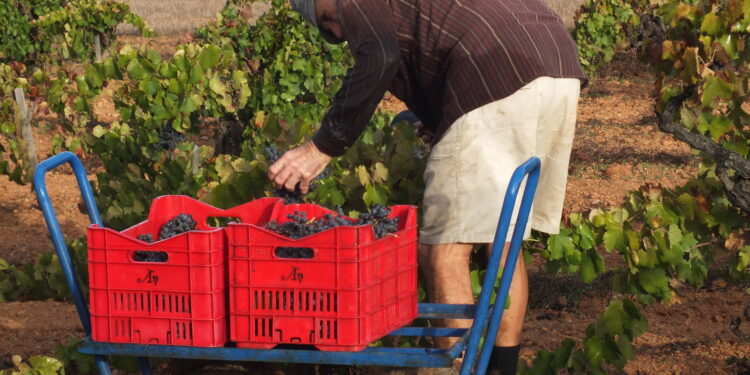Once seen as a tourist’s afterthought, Mallorcan wine has in recent decades forged a powerful reputation for authenticity, innovation and terroir. At the heart of this revival is AN/2, the flagship cuvée of Anima Negra — a wine born of native grapes, volcanic stone, and a belief that the soul of an island could be bottled.
Nestled in the Mediterranean, Mallorca has long lured visitors with its turquoise coves, medieval towns and wind-swept pine forests. But hidden beyond the beaches and boutique hotels lies an agricultural tapestry whose roots stretch deep into time: the vineyards of the Pla i Llevant, Serra de Tramuntana and Binissalem, among other winemaking zones, where centuries of cultivation meet a very modern renaissance.
Mallorcan wine, once derided as rustic or forgettable, is now a rising force in European viticulture. In particular, the wines of Anima Negra — most famously their AN/2 blend — have become a symbol of the island’s return to artisanal excellence. Through careful farming of native grape varieties like Callet, Mantonegro and Fogoneu, and by eschewing chemical shortcuts or flashy oak bombs, Anima Negra and a handful of likeminded producers have transformed Mallorca from an enological backwater into one of the continent’s most compelling wine stories.
A landscape shaped by hardship and heat
To understand Mallorcan wine is to appreciate the unique collision of geography, history and necessity that defines its evolution. The island’s climate is typically Mediterranean: hot, dry summers and mild, wet winters. Yet the specifics vary dramatically depending on altitude, wind and soil composition. On the southern and central plains, the ground is reddish clay and limestone. Along the Tramuntana range, slate, schist and rockier soils dominate.
Viticulture here dates back to Roman times, and later flourished under the Moors. By the late 1800s, Mallorca boasted over 30,000 hectares of vineyard — a vast expanse considering the island’s modest size. But the phylloxera plague, coupled with shifting agricultural trends and political instability, reduced that number to a fraction. For much of the 20th century, local wine was produced in bulk, primarily for domestic consumption, and rarely crossed the Balearic Sea.
This began to change in the late 20th century, when a handful of growers — inspired by the successes of Rioja, Priorat and Burgundy — began to ask a radical question: What if Mallorca’s native grapes were not inferior, but simply misunderstood?

Anima Negra: Soul of the island
In 1994, two friends — Miquel Ángel Cerdà and Pere Obrador — set out to answer that very question. Both had grown up around winemaking but were disillusioned with the homogenised, high-alcohol wines dominating the Spanish market. Rather than mimic international styles, they turned instead to local tradition and terroir, founding Anima Negra in Felanitx, in the southeast of the island.
With no formal training but a deep respect for old vines and indigenous grapes, they began experimenting. Their flagship creation, AN/2, was a revelation: a blend of primarily Callet (around 65%), supported by Mantonegro and Fogoneu. The grapes were harvested from low-yielding bush vines — many over 50 years old — growing in iron-rich clay soils. Fermentation was carried out using natural yeasts, and the wine was aged in a combination of French and American oak for around 13 months.
The result was something extraordinary: a wine that captured the warmth and minerality of Mallorca, yet with elegance and finesse. AN/2 offered aromas of ripe cherry, plum, dried herbs and subtle spice, supported by a soft structure and earthy complexity. Critics took notice. So did sommeliers. What had once been considered rustic was now celebrated as rare and authentic.
Today, Anima Negra exports to over 25 countries, and AN/2 has become a staple in fine restaurants from Stockholm to San Francisco. Yet despite its success, the wine retains its deeply local identity. No Cabernet, no Merlot, no Tempranillo. Just the old Mallorcan varieties — coaxed into expression by careful hands and volcanic soil.
The grapes that time forgot
Central to Mallorca’s wine revival is the rediscovery of its native varietals. Of these, Callet is the undisputed star. Pale in colour but rich in nuance, Callet produces wines of medium body, bright acidity, and complex aromatics. In the wrong hands it can seem thin; in the right ones, it yields haunting wines full of Mediterranean character — rosemary, dried figs, cherry stone and dusty roads.
Mantonegro, often grown in Binissalem, is darker, spicier and less refined, but lends body and weight to blends. Fogoneu, meanwhile, is delicate and prone to oxidation, but adds lightness and fragrance.
These grapes had been dismissed for decades as inferior, useful only in blends or for bulk wine. But producers like Anima Negra, 4Kilos, Mesquida Mora and Can Majoral have proven otherwise. Rather than forcing the grapes into the mould of Bordeaux or Napa, they embraced their limitations and turned them into virtues. Lower alcohol. Higher acidity. A focus on texture, not power.
As climate change pushes winemakers around the world to rethink their varietals, Mallorca’s old grapes have gained new relevance. Callet, for instance, ripens late and retains acidity even in hot years — making it more climate-resilient than Syrah or Grenache.
Organic by necessity, not fashion
Another striking feature of the Mallorcan wine movement is its low-intervention ethos. While not all producers are formally certified organic or biodynamic, most work in close alignment with these principles. Chemicals are rare. Cover crops are used. Yields are kept low, often through dry-farming — relying solely on rainfall.
In the case of Anima Negra, this is not marketing spin. Their old vineyards — some dating back nearly a century — are farmed by hand, with deep respect for biodiversity. Fermentations use ambient yeast, and oak is used sparingly. The result is not only better wine, but greater expression of place.
The AN/2 label reflects this philosophy. It is neither overly polished nor aggressively rustic. Instead, it walks a tightrope between modernity and tradition. It is drinkable young but improves with a few years in bottle. Above all, it feels honest — a snapshot of time, place and people.

A new kind of luxury
For decades, Mediterranean wine was trapped in a paradox: luxurious setting, but little interest from high-end wine consumers. Tourists to Mallorca would sip wine by the sea but never think to take a bottle home. That is now changing.
Mallorcan wines like AN/2 are not trying to compete with Bordeaux in grandeur, or Burgundy in price. Instead, they offer something increasingly rare in the global wine market: authenticity. A connection to land and culture that hasn’t been scrubbed clean by international consultants or aggressive branding.
As global wine trends shift away from Parker-era big reds and toward lighter, more expressive styles, the wines of Mallorca feel right on time. They’re also increasingly hard to find. With limited production and growing demand, bottles like AN/2 often sell out within weeks of release.
Prices remain modest — especially compared to the premium Spanish market — but this may not last. With international acclaim and a new generation of Mallorcan winemakers entering the field, demand is likely to keep rising.
Beyond AN/2: The next chapter
While AN/2 remains Anima Negra’s most recognisable bottle, the estate’s ambition does not end there. Their more limited bottling, Anima Negra “An” (sometimes called AN/1), is a more concentrated, age-worthy version of the same philosophy — deeper, darker, and built for the cellar. They also produce a white wine made from the rare Premsal and Giro Ros grapes, which offer saline freshness and hints of citrus blossom.
Meanwhile, across the island, other projects have emerged in the wake of Anima Negra’s success. Francesc Grimalt, once the winemaker at Anima Negra, went on to co-found 4Kilos Vinícola, a garage winery known for bold experimentation and natural wine aesthetics. Their wines — like “Grimalt Caballero” and “Motor America” — play with amphora ageing, unfiltered bottling, and unorthodox blends, yet still rooted in Mallorcan grapes.
Producers like Mesquida Mora take a more spiritual approach, with biodynamics and poetic labelling. Others, like Can Axartell near Pollença, have invested in gravity-fed wineries carved into limestone to protect their wines from the island’s searing heat.
Each of these projects adds depth and dimension to the Mallorcan wine map. But all of them owe a debt to Anima Negra — and in particular, to that one curious bottle of AN/2, which showed that Mallorcan grapes could stand tall without needing to disguise themselves.
Wine as identity
There is a quiet confidence in Mallorcan wine now — not loud or boastful, but assured. The island does not need to explain itself. Nor does it need to chase trends. Its wines, when allowed to speak in their own voice, tell a story more compelling than any imported style or international grape.
AN/2 is not just a bottle. It is a narrative. Of two friends, of an island rediscovering itself, of soil and stone and soul. It is the kind of wine that doesn’t shout but lingers — in memory, in conversation, in glass.
And in doing so, it reminds us that true luxury lies not in perfection, but in presence. Not in gloss, but in grace. Not in domination, but in roots.
REFH – newshub finance



Recent Comments